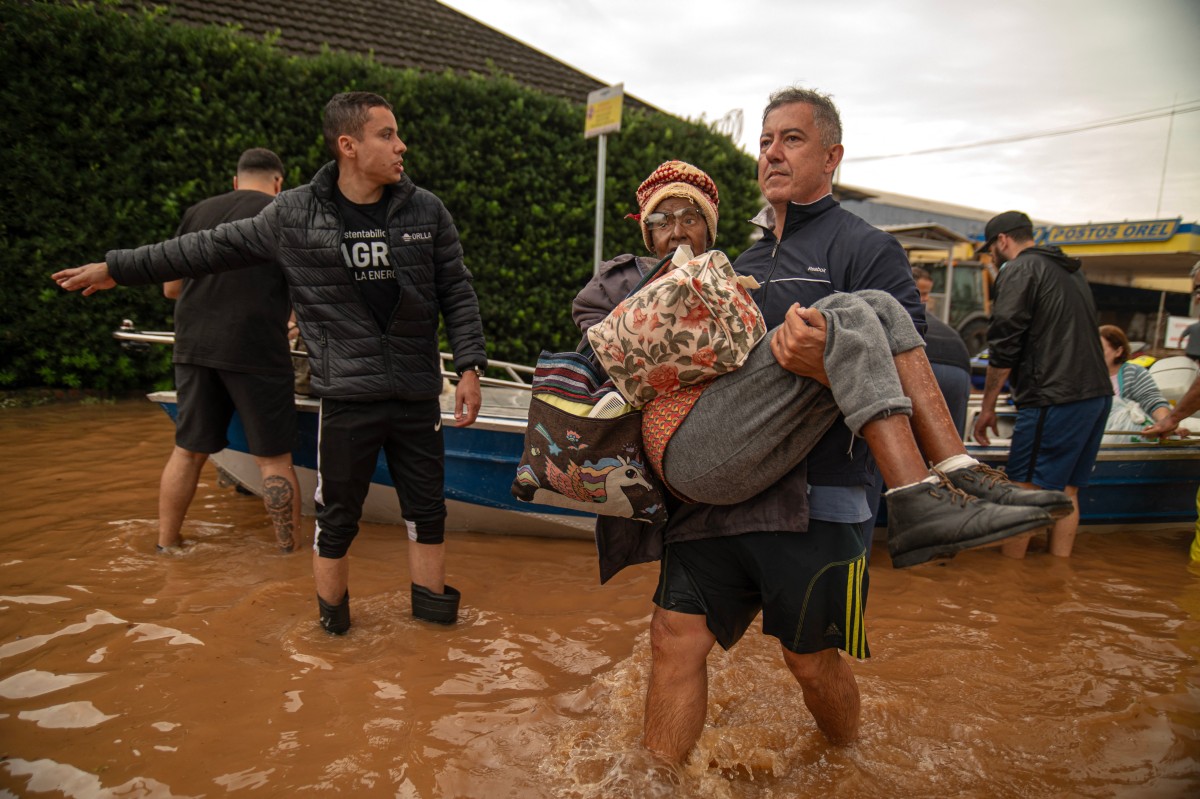Raging floods and mudslides have killed at least 55 people in southern Brazil and forced nearly 70,000 to flee their homes, the country’s civil defence agency said on Saturday.
At least 74 people were injured and another 67 missing from the catastrophic flooding, civil defence said.
The toll did not include two people who died in an explosion at a flooded gas station in Porto Alegre, witnessed by an AFP journalist, where rescue crews were attempting to refuel.
Fast-rising water levels in the state of Rio Grande do Sul were straining dams and particularly threatening economically important Porto Alegre, a city of 1.4 million.
- DSS seals off clinic over alleged quackery, death in Jos
- Kano gov’t denies shooting of reporter at Government House
The Guaiba River, which flows through the city, is at a historic high of 5.04 meters (16.5 feet), well above the 4.76 meters that had stood as a record since the devastating 1941 floods.
Authorities scrambled to evacuate swamped neighbourhoods as rescue workers used four-wheel-drive vehicles – and even jet skis – to manoeuvre through waist-deep water in search of the stranded.
In addition to the 69,200 residents forced from their homes, the civil defence also said more than a million people lacked access to potable water amid the flooding, describing the damage as incalculable.
Rio Grande do Sul Governor Eduardo Leite said his state – normally one of Brazil’s most prosperous – would need a “Marshall Plan” of heavy investment to rebuild after the catastrophe.
In many places, long lines formed as people tried to board buses, although bus services to and from the city centre were cancelled.
The Porto Alegre International Airport suspended all flights on Friday for an undetermined period.
President Luiz Inacio Lula da Silva posted a video of a helicopter depositing a soldier atop a house, where he used a brick to pound a hole in the roof and rescue a baby wrapped in a blanket.
Joao Guilherme, a 23-year-old salesman, found his way to safety in the state capital – but without his cell phone.
“I have no communication with anybody, I’m very shaken,” he said.
The speed of the rising waters unnerved Greta Bittencourt, 32, a professional poker player.
“It’s terrifying because we saw the water rise in an absurd way, it rose at a very high speed,” Bittencourt said.
‘Going to be much worse’
With waters starting to overtop a dike along another local river, the Gravatai, Mayor Sebastiao Melo issued a stern warning on social media platform X, saying, “Communities must leave!”
He urged people to ration water after four of the city’s six treatment plants had to be closed.
In a live transmission on Instagram, Governor Leite said the situation was “absolutely unprecedented,” the worst in the history of the state, home to agroindustrial production of soy, rice, wheat and corn.
Residential areas were underwater as far as the eye could see, with roads destroyed and bridges swept away by powerful currents.
Rescuers faced a colossal task, with entire towns inaccessible.
At least 300 municipalities have suffered storm damage in Rio Grande do Sul since Monday, according to local officials.

 Join Daily Trust WhatsApp Community For Quick Access To News and Happenings Around You.
Join Daily Trust WhatsApp Community For Quick Access To News and Happenings Around You.


